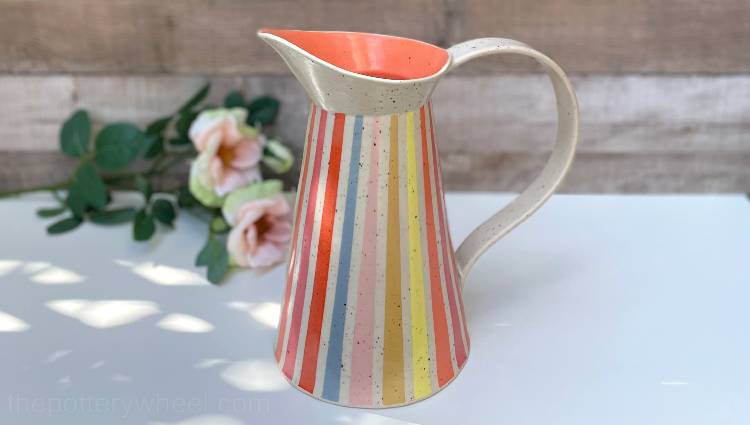Your cart is currently empty!
Bone China Vs Porcelain -A Close Look at the Differences
Published:
Last Updated:
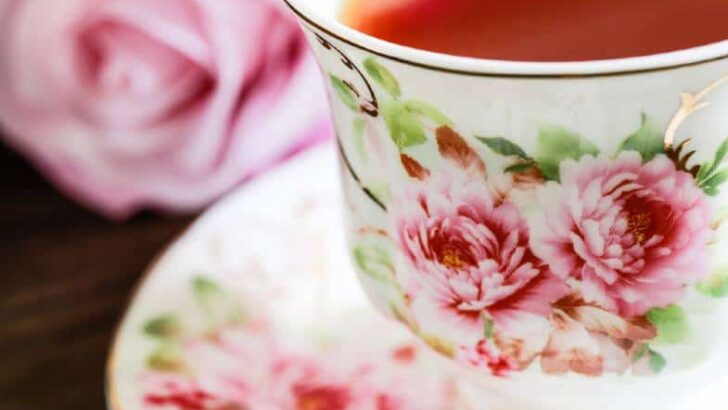
Affiliate Disclaimer
As an affiliate, we may earn a commission from qualifying purchases. We get commissions for purchases made through links on this website from Amazon and other third parties.
Since bone china is technically a type of porcelain, it can be difficult for some people to distinguish between the two. However, several key differences exist. This article compares bone china vs porcelain, looking at some similarities and differences between the two.
The key difference between porcelain and bone china is that porcelain does not contain bone ash. Most porcelains are more fragile than bone china. However, porcelain may be molded into a broader range of forms because of its composition. Bone china has a smooth, delicate look due to its eminent translucent white color from the bone ash composition.
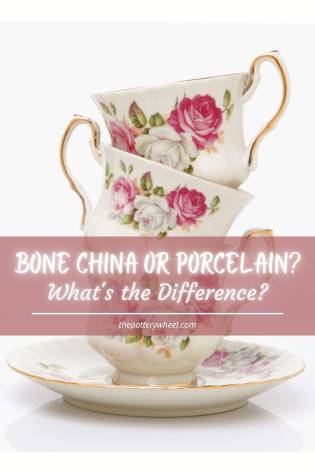
Bone China Overview
Essentially cone china gets its name from the fact that it is produced from bone ash. And bone ash is precisely what it sounds like, crushed animal bones, typically cow bones.
Bone china has a particular amount of bone ash, often between 30 and 45 percent, mixed with other materials such as ball clay, silica, quartz, feldspar, kaolin (a kind of clay), and others. After that, the mixture is molded or sculpted into the appropriate shape and fired.
Porcelain Overview
Porcelain has been around since approximately A.D. 620, with more contemporary techniques and mixes being employed around A.D. 1279. The first porcelains, which originated in China, were made from pegmatite (a type of granite) and kaolin (clay).
Clay and powdered glass were utilized in early European versions. In 1707, German manufacturers began using feldspar instead of glass, which has continued to this day. Silica is also added to the raw materials of today’s porcelain. The essential ingredients are carefully powdered, cleaned, molded, and burned.
The firing process is what determines whether the final product will be porcelain or fine china. When the temperature is raised to about 1,455° Celsius (2,650° F), the resulting product is porcelain.
A piece is only classified as fine China if it is burned at a lower temperature—around 1,200° (2,200 degrees Fahrenheit). Because fine china is gentler than porcelain, it is better suited for uses such as cups and plates. Porcelain is robust and durable enough to be used in various industrial applications, like electrical insulators.
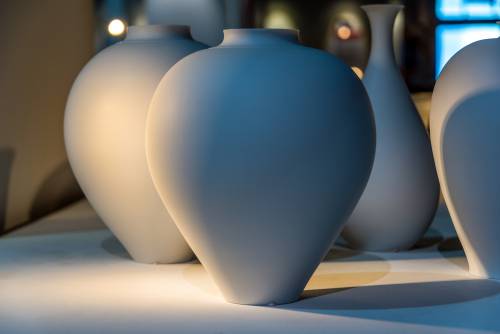
Bone China Vs Porcelain – A Comparison
First, let’s take a look at the history of these two types of ceramic ware.
History
The origins of bone China may be traced back to Josiah Spode the 2nd, who introduced it in 1800. His basic recipe of 4 parts China stone, 3.5 parts China clay, and 6 parts bone ash is still used today to make the typical English body.
The recipe for bone China was quickly adopted by Spode’s competitors—Davenport, Minton, Worcester, the Herculaneum, and Derby plant in Liverpool. Later competitors included Wedgwood in 1812, New Hall in 1810, and Rockingham in 1820. The quality, shape, and ornamentation varied drastically; some inclined, from about 1820, toward vivid color and extravagant gilding, while others made elegant, modestly decorated tableware.
You can classify porcelain into three main categories; true, hard-paste, or soft-paste. Porcelain was invented in China, initially rudimentary form during the Tang dynasty (618–907) and then most familiar to Westerners during the Yuan dynasty (1279–1368).
China stone or Petuntse (a feldspathic rock) was crushed to powder and combined with kaolin to make this genuine, or hard-paste, porcelain (white China clay). The Petuntse vitrified during the fire at around 1,450 °C (2,650 °F), while the kaolin ensured that the item kept its form.
The earliest European porcelain was manufactured in Florence in 1575 at factories under the sponsorship of Francesco I de Medici. Still, it was not mass-produced until the late seventeenth and eighteenth centuries. Ehrenfried Walter von Tschirnhaus and Johann Friedrich Böttger discovered the secret of genuine porcelain, comparable to Chinese porcelain, around 1707 at the Meissen plant in Saxony.
Raw Material
Because bone china is a kind of porcelain, the raw materials used are almost similar. The primary distinctions between bone china and porcelain are two: bone ash content and two firings in the manufacturing process.
Other Ingredients
Clay: The specific composition of clay is typically determined by where it is extracted. Regardless of where it is obtained, clay will frequently have very similar characteristics. All clays, for example, vitrify only at high temperatures. The sole exception is when the addition of certain materials reduces the vitrification threshold. Furthermore, burned clays have a refractory contribution to the completed product.
Feldspar: Feldspar is primarily made up of flint and aluminum silicate. Flint is hard quartz that is used as a flux in a porcelain composition. Changes can be utilized to lower the temperature at which liquid glass is produced, typically around 1000 to 1300oC.
Silica: Silica is a chemical molecule produced by the interaction of silicon and oxygen gas, two of the most common elements on the planet. It occurs naturally in three forms: amorphous, crystalline, and impure, as seen in quartz, sand, and opal, respectively.
China stone: China stone is a partly kaolinized, feldspar-rich type of granite that contains no iron and is used in the manufacturing of bone China (see later). Its mineral makeup includes mica, quartz, and feldspar, and it is frequently found in conjunction with kaolin. The resemblance of China stone to Petuntse, which is used to produce hard-paste porcelain, is likely why it became a significant component of bone China.
Kaolin: Kaolin is a clay mineral that is white and produced by the weathering of other aluminosilicate minerals. It is utilized in the majority of contemporary ceramics.
Bone ash: Bone ash is calcined, crushed, and finely powdered animal bones used in Bone China production. Typical bone ash comprises roughly 56% calcium oxide, 42% phosphorus pentoxide, and the remainder water. The calcination process takes place at a temperature of about 1,000 °C.
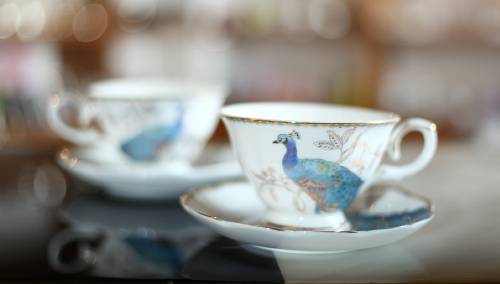
Bone China Vs Porcelain – The Manufacturing Process
Let’s take a look now at the differences in how bone china vs porcelain is made:
Porcelain
Following the selection of the needed raw materials and the extraction of the requisite weights, they are subjected to a series of preparation processes. They are crushed first, then cleansed.
The raw materials are then mixed before going through a series of forming procedures: (Pressing, casting, stiff plastic forming, or soft plastic forming.) The forming technique used is typically determined by the type of porcelain pottery to be produced.
After creating the porcelain body, it is fired and can subsequently be glazed. Glazing is the process of melting a decorative glass layer onto a ceramic body.
Bone China
There are numerous processes involved in the production of bone china. The clay and bone ash must be combined with water before the slurry is molded into huge cylinders that are cut and shaped into plates, bowls, cups, and other pieces using plaster molds.
The stakes are removed from the molds, given a rough washing to remove any extra clay and lumps or other defects, and then burned in a kiln at about 2,300° Fahrenheit.
After firing, the pieces are polished, re-heated, coated, and fired once more to solidify the glaze. The pieces that have been glazed are next embellished, either by machine or by hand. They are then re-fired and examined to set the embellishments.
Look and Color
You might not be able to identify the difference between bone china and porcelain at first glance. However, if you look closely, you will notice that bone China is not as brilliantly white as porcelain. The hue of bone China is creamy white due to the presence of bone ash. Lastly, since they are very thin and lightweight, bone china tends to be translucent.
Final Thoughts
In summation, bone china is a type of porcelain distinguished by the addition of bone ash during the manufacturing process. It is more expensive than most porcelains. However, it is important to note that some fine china pieces are pricier.
Another distinction between bone china and other porcelains is the color. While bone China is usually creamy-white and may or may not have hand-painted motifs, porcelain pieces come in various colors, rim treatments (gold or silver), and designer patterns.
Lastly, porcelain and bone China bodies are made from similar raw materials like kaolin, feldspar, clay, quartz, and calcium phosphate.

